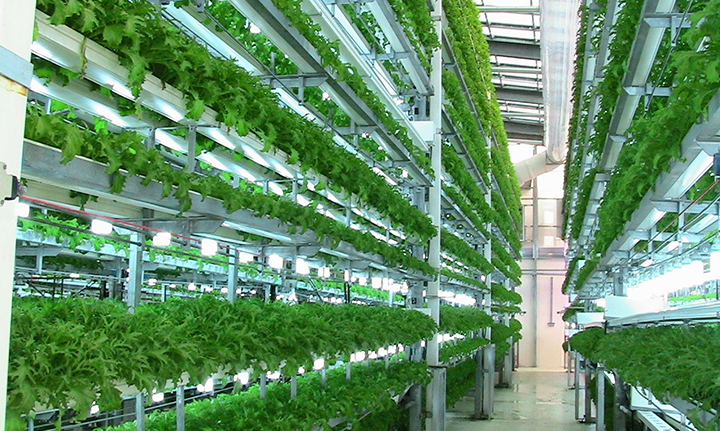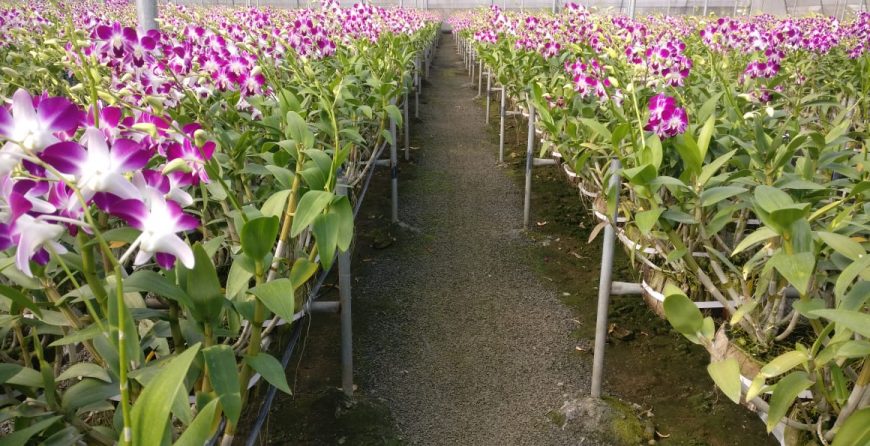ORCHIDS are considered to be the world’s most beautiful ofGod’s creation, valued for their exquisite flowers and long keeping quality. They belong to the family Orchidaceae and are perennial herbs. Nearly 25000 species of orchids spreading over 730 genera are reported in the World, besides hybrids producedregularly.
Orchids, which grow on trees, are known as epiphytes. Those that grow on the ground are referred to as terrestrial. Those that grow on rocks are known as lithophytes, while some relatively fewer known ones growing on decaying matter or rotting logs are known as saprophytes. A few orchids grow under semi aquatic condition, submerged in water and sometimes only the inflorescence reaching the surface.
Orchids exhibit two types of growth habits based on their style of vegetative growth as follows:
Importance of orchids In India
- Highest selling flower in Indian cut flowers industry.
- Most popular Dendrobium variety
- Approximately Turn over about 100 Cr. Per annum
- Main Import Cities: – Mumbai, Delhi, Madras, Bengaluru, Hyderabad,
- Popular Color: – White, Violet, Yellow and Pink
- Potential: – Good demand in the Indian Flower market.
Dendrobium Orchid Variety
- Red Sonia
- Big White(5N)
- Big White Sanan
- Aiyara Pink
- Singapor White
- Lovely Pink
- Burana Zade

Climate
Orchid Like
- Temperature between 180C – 300C.
- Proper Ventilation.
- Day & Night time temperature 100C to 200C variation is affordable.
- During day hours 15,000 Lux – 40,000 Lux.
- Humidity
- During Night – Not less than 30%.
- During day time – Maintain 80%.
- To Use sprinkler for watering. Minimum 2 – 3 times as per the requirement of the plant.
- During hot climate, the plant required more water to not dry up the plant. During the plant active growth, plants needs more water.
Growing environment:
75% shade net house with 70- 80% humidity, day temperature of 21 – 29oC and night temperature of 18 to 21oC is ideal for growing this tropical orchid. In high rainfall zones, the shade net house should be provided with a rain shelter.
Propagation:
Division of clumps, keikis, back bulbs and tissue culture plants.
Containers and support: perforated earthen pots are ideal and the plants are staked with bamboo sticks.
Growingmedia:
Most common potting mixture consists of charcoal, broken pieces of bricks and tiles, coconut husk and fiber.
Irrigation:
Mist or overhead sprinkler to provide water and to maintain humidity.
Nutrients:
Foliar application of NPK 20:10:10 @ 0.2% at weekly intervals starting from 30 days after planting.
Growth regulators
Foliar application of GA3 50 ppm at bimonthly intervals starting from 30 days after planting.
Repotting
Orchids need repotting regularly, usually every two to three years.
- When the plant grows large and overgrows its container.
- When the potting material deteriorates
- When the plant has to be split or divided
- It is better to repot epiphytes every year.
The best time for repotting is when fresh roots emerge at the bases of the previous year’s growth. In monopodial climbers, repotting or division has to be done when new leaf growth shows at the top and there is new root growth.
Splitting or division of plants
Plant grown to a large clump with 2 or 3 old canes and new shoots, – divided before repotting. Each division – at least one old cane of two years’ growth, one new shoot & some new roots.
Pests:
Snail and slug: Hand pick and destroy
Harvest
Dendrobium flower fully matures only 3 or 4 days after it opens. Flowers are harvested when they are fully open as the flowers cut prior to their maturity will wilt before reaching the wholesaler. Immediately after harvest, the lower 0.75cm of the peduncle is cut off, and the flower is inserted into a fresh tube of water containing preservative. Harvesting the spike when 75 per cent of the flowers are open and remaining buds are unopen.
| Pulsing | 8-HQC 500 ppm + Sucrose 5% for 12 hrs |
| Holding solution | AgNO3 25 ppm + 8-HQC 400 ppm + Sucrose 5% |
| Wrapping material | 50-gauge polythene with base of spikes dipped in 8-HQC 25 ppm |
[/ultimate_info_table]
Yield:
8 – 10 spikes/plant/year
Pests:
Snail and Slug:
Hand pick and destroy them immediately.
Diseases:
1. Bacterial soft and Brown rot (Ervinia spp.)
Foliar application with Streptomycin Sulphate @ 0.5 g + Copper Oxy Chloride @ 2 g/l.
2.Bacterial Brown spot (Acidovorax sp.)
Foliar application with Streptomycin Sulphate @ 0.5 g + Copper Oxy Chloride @ 2 g/l.
3. Blackrot (Pythiumsp.and Phytothora sp.)
Foliar application of Metalaxyl 2 g / lit. (or) Dimethomorph 50% WP 0.5 g / lit.
4. Anthracnose – Foliar application of Thiophanate Methyl 2 g / l (or) Difenoconazole 0.5 ml/l


